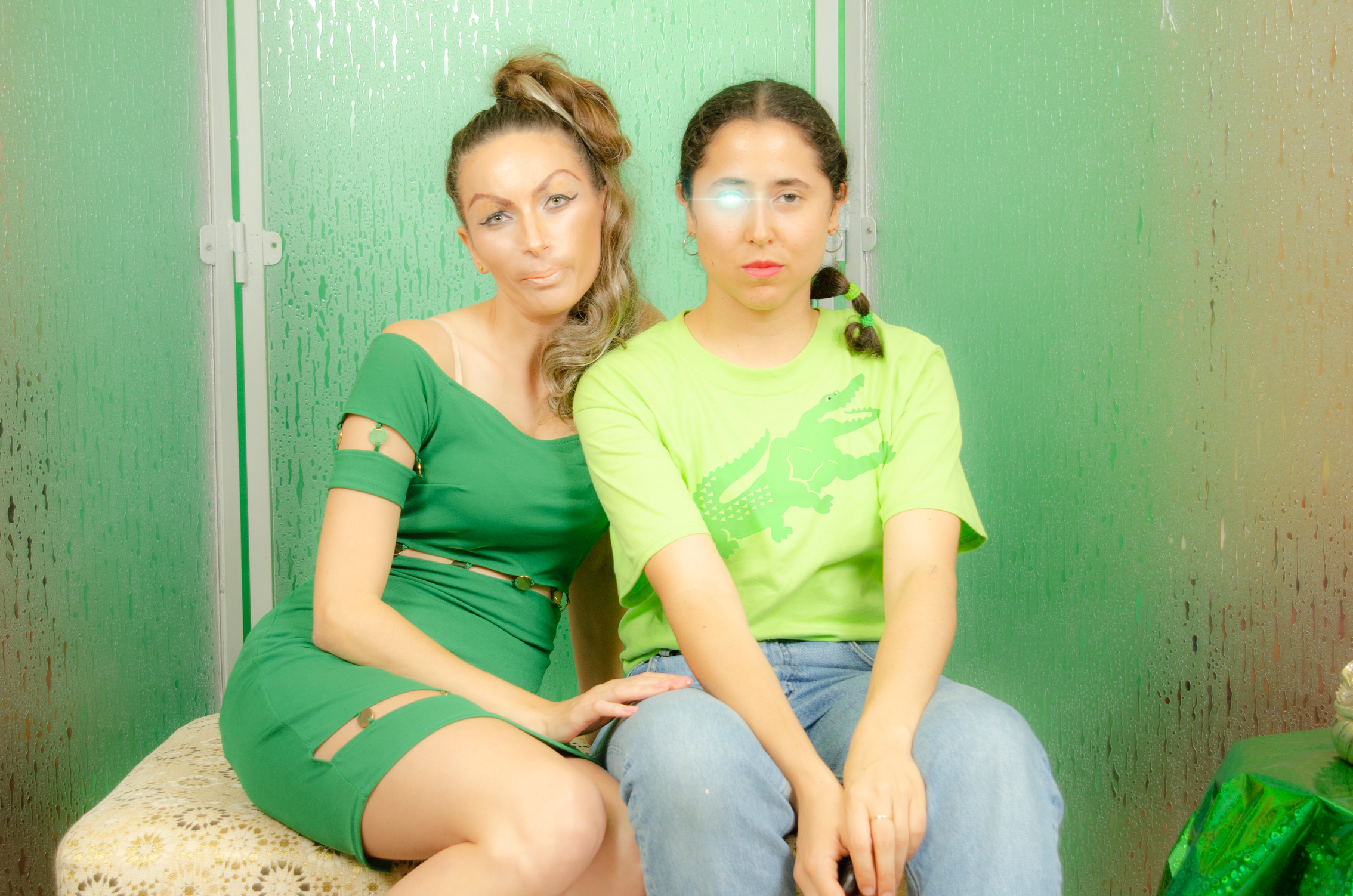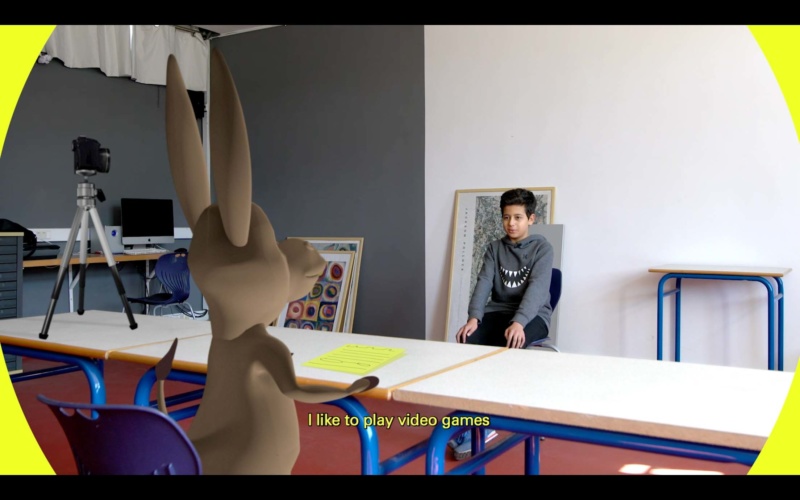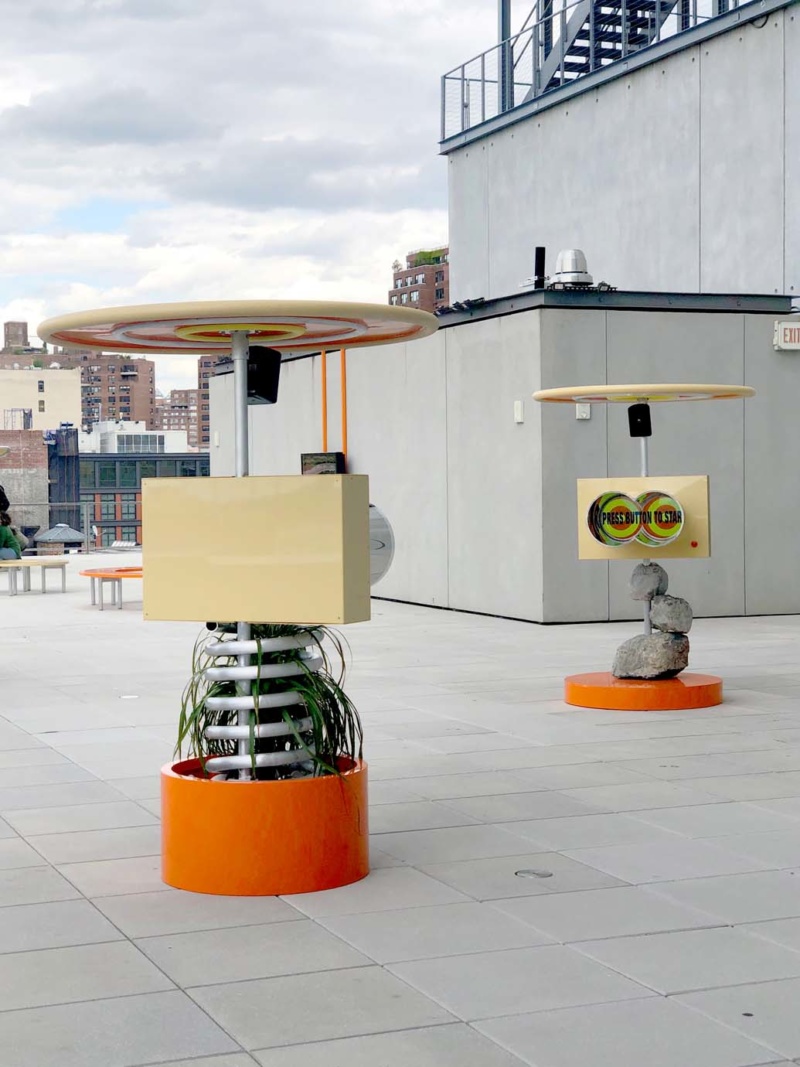
Meriem Bennani likes to film in the open streets of Morocco, allowing life to enter into the frame. The public is as much a movie set as the contained, constructed environments that Bennani alternately stages. Based in New York since 2012, she was born in Rabat in 1988. “Morocco is sensual and highly corporeal. It is a sexual place,” Bennani says. Physicality runs alongside the presence of religion, alongside a matriarchal culture that blossoms indoors. Bennani could make endless work about this tension, she tells me, “without ever reaching the answer to it, reaching the end of it.” In Rabat, men tend to congregate outside in groups. Women less so. Instead, gatherings of women form inside the home. Music populates familial domestic space and, in turn, the domestic becomes the locus for a number of ecstatic dance scenes throughout Bennani’s videos.
The presence of song mirrors the experience of the city. Bennani’s cast members, who are also frequently her family members, live beyond the body in an awareness of the virtual realm. Participants in the videos are given role-play prompts. For example: “Pretend you are on an island in the future.” Bennani exaggerates their physicality through 3D slapstickanimations of enlarged eyes, faces swathed in golden dust, and a swirling, spiraling, stretched digital effect filter that pulls at the fabric of a dress. The digital world tugs at the characters, intercepting the real world and hinting at a life inbetween the past and the future, the tangible and intangible, the cyber and the concrete.
Before Bennani began working in video, she drew—and she still does. Animation spirits her documentary aesthetic. Take, for example, the video The Fly (2016), in which the final vignette is narrated by a buzzing bug. The insect circles Morocco from above before landing on the camera lens. Inserting humor into a corporate strategy, Bennani built the animation of this fly using a similar texture applied by Samsung in 3D animation programs to their company designs. Rihanna’s “Kiss It Better” squeaks through the fly’s vocal chord while it alights from covered markets and observes the city as an omnipotent illustration.

Bennani’s videos travel through towns, visiting their occupants and finding an oral history of rumors upheld through twice-removed acquaintances. In Party on CAPS (2018), shown in the Biennial of the Moving Image in Geneva in 2018, the setting is in the far future, technologically speaking, on an imaginary island called CAPS. Illegal immigrants have landed on this island through intercepted teleportation travel en route to the United States. A video guide, in the form of an animated alligator from a cereal box, tells us “violent interception is the reality that unites all communities...it’s a place where the idea of having a body itself is never taken for granted.”
Here, humans access internet screens through eyesight command. Wishful projections manifest in mid-air through online search portals, as the brain is synchronized with a virtual platform. But the immediate surroundings are decades old—the same regional pharmacy, the neighbor’s house, the pizzeria that sells fries. A collusion of time periods suggests that bodies are held hostage in past geographies while minds are disconnected in a futureseeking preoccupation. One character says, “I am the only person on this island who can sing the way they used to back in Morocco.”
“How did you learn?” asks another.
“I learned from my parents. My father, my mother. They were musicians.”

On the terrace of the Whitney Museum in the 2019 Whitney Biennial, three sculptures with inset video screens and one flatscreen monitor sit like celestial totems. Within Bennani’s larger installation MISSION TEENS: French School in Morocco is an interactive video installation, with two pushbutton activated screens that alternate playback. Through the past four years, all of Bennani’s installations have included sculptural elements that act as screens. There are discs, cylinders, rectangles. The duplication of the video image among simultaneous projections and surfaces is most acutely present in Bennani’s 2017 installation of Siham and Hafida at The Kitchen. The piece tells the story of an elder, Hafida, who watches a young woman, Siham, become a star. At the center of the intergenerational struggle is also an examination of the construction of femininity. Hafida’s lessons learned as a young Aita singer were stricter, more demanding, and harder earned. Throughout, Bennani animates Siham’s songs with cartoon butterflies in flight, emerging from mouths and touching down. Intimate annotations radiate across stacked screens, reminiscent of a sports stadium where one misses the details of the action, while simultaneously absorbing every move.
In MISSION TEENS: French School in Morocco, Bennani’s most autobiographical work to date, she is a symbolic parent to a group of high school students. The documentary-slash-reality television piece brings into view a group of students in a post-colonial French high school in Morocco. The kids are popular, the opposite of bookish types. They like the idea of becoming stars and know little of Moroccan history. Since in her past videos, Bennani has been surrounded by her elders while looking in, for the first time, Bennani “feels the responsibility of being an elder herself” and glances backwards at the implications of her own education in a classist, elitist school system. In MISSION TEENS: French School in Morocco, colonial possession and cultural tension are refracted through a multiplication of screens, through Bennani’s relationship to the teenagers on camera, through her relationship to herself through these students, and through the ability to take comic relief from her position as interviewer in the guise of a donkey.




